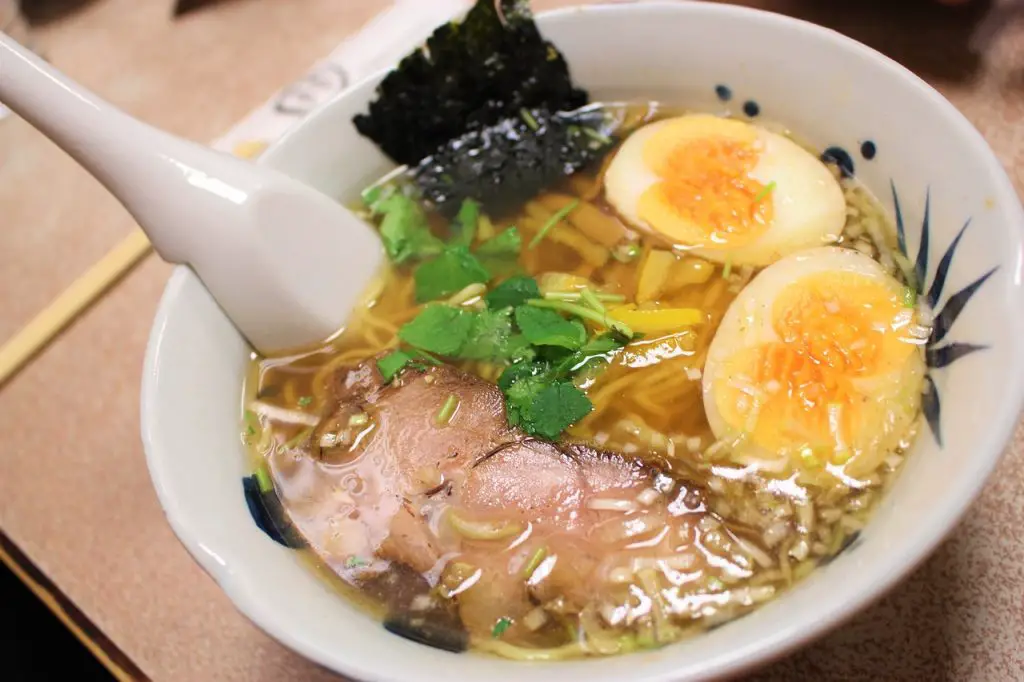Ramen noodles, originally from China, have become an iconic and beloved dish in Japan. Over the years, they have evolved into a diverse and rich culinary experience that captures the essence of Japanese cuisine. Authentic Japanese ramen noodles are a testament to the country’s dedication to perfection in every aspect of culinary artistry. In this article, we’ll take you on a journey through the history, types, and preparation of authentic Japanese ramen noodles, and we’ll even share a delicious recipe for you to try at home.
The History of Ramen in Japan
Ramen’s journey to Japan began in the late 19th century when Chinese immigrants introduced it to the country. Initially known as “shina soba” or “Chinese soba,” these noodles were enjoyed in Chinese restaurants and quickly gained popularity. However, it was after World War II that ramen underwent a significant transformation, becoming the beloved Japanese dish we know today.
Post-war Japan faced food shortages, and the American military introduced instant ramen, which became a staple. Instant ramen’s success paved the way for the rapid development of ramen culture in Japan. Japanese chefs and entrepreneurs began experimenting with new flavors and techniques, leading to the birth of the diverse ramen styles we see today.
Types of Authentic Japanese Ramen
Shoyu Ramen: Shoyu ramen, or soy sauce ramen, is one of the oldest and most traditional ramen styles in Japan. Its clear, brown broth is made from a combination of soy sauce, chicken or pork stock, and other seasonings. The noodles are typically thin and curly, and the toppings often include chashu (braised pork belly), green onions, and bamboo shoots.
Miso Ramen: Miso ramen, as the name suggests, features a hearty and flavorful broth made from fermented soybean paste (miso). This style of ramen originated in Hokkaido and is known for its rich, umami taste. It’s often accompanied by toppings like corn, butter, and ground pork, creating a unique and satisfying flavor profile.
Tonkotsu Ramen: Tonkotsu ramen hails from Kyushu and boasts a creamy and opaque pork bone broth. The broth is achieved by simmering pork bones for hours, resulting in a rich, collagen-filled liquid. The noodles are usually thin and straight, and toppings may include chashu, soft-boiled eggs, and sesame seeds.
Shio Ramen: Shio ramen, or salt ramen, is characterized by its clear and light broth, which is seasoned with salt and various aromatics. The flavor of the broth allows for a delicate balance of umami and saltiness. Common toppings include seafood, vegetables, and seaweed.
Tsukemen: Tsukemen is a unique ramen style where the noodles and broth are served separately. The noodles are typically thicker and chewier than in traditional ramen, and they are meant to be dipped into a concentrated broth. The broth is intensely flavored, often with a strong soy or seafood base, creating a robust and satisfying eating experience.
Making Authentic Japanese Ramen Noodles at Home
Now that we’ve explored the various styles of authentic Japanese ramen noodles, it’s time to try making your own at home. We’ll provide you with a step-by-step recipe for Shoyu Ramen, one of the most beloved and classic ramen styles.
Ingredients:
For the Broth:
4 cups chicken broth
2 cups pork broth (you can buy this or make it by simmering pork bones)
2 tablespoons soy sauce
1 tablespoon sake (Japanese rice wine)
1 tablespoon mirin (sweet rice wine)
1 teaspoon sugar
2 slices of ginger
2 cloves of garlic, minced
For the Toppings:
4 servings of ramen noodles
4 slices of chashu (braised pork belly)
4 soft-boiled eggs
2 sheets of nori (seaweed)
4 green onions, finely chopped
Bamboo shoots (optional)
Menma (fermented bamboo shoots, optional)
Instructions:
Prepare the Broth:
In a large pot, combine the chicken broth, pork broth, soy sauce, sake, mirin, sugar, ginger slices, and minced garlic.
Bring the mixture to a boil and then reduce the heat to simmer for about 30 minutes to allow the flavors to meld. Skim off any impurities that rise to the surface.
Cook the Noodles:
While the broth is simmering, cook the ramen noodles according to the package instructions. Drain and set aside.
Prepare the Toppings:
Soft-boil the eggs for about 6-7 minutes, then cool them in an ice bath. Once cooled, peel and slice them in half.
Heat the chashu slices in a separate pan until they’re heated through.
Assemble the Ramen Bowls:
Divide the cooked noodles among four bowls.
Ladle the hot broth over the noodles, making sure to evenly distribute the flavors.
Arrange the chashu slices, soft-boiled eggs, nori sheets, green onions, bamboo shoots, and menma on top of the noodles.
Enjoy:
Serve your homemade Shoyu Ramen hot and enjoy the authentic flavors of Japanese ramen in the comfort of your home!
Authentic Japanese ramen noodles are a testament to the culinary creativity and dedication to perfection that Japan is known for. With a rich history and diverse range of styles, ramen has evolved into an iconic dish enjoyed worldwide. While visiting a ramen shop in Japan is a culinary experience like no other, you can also recreate the magic at home with our Shoyu Ramen recipe. So, gather your ingredients, get cooking, and savor the delicious taste of authentic Japanese ramen noodles.
Tips for Perfecting Your Homemade Ramen:
Broth Perfection: The key to a great bowl of ramen lies in the broth. Take your time when simmering the broth to extract maximum flavor. Consider using a combination of chicken and pork bones for added depth.
Toppings Variation: While we’ve provided a classic Shoyu Ramen topping selection, feel free to customize your ramen with your favorite ingredients. Add some sautéed mushrooms, spinach, or sweet corn for a unique twist.
Noodle Selection: Opt for high-quality ramen noodles, either fresh or dried, for an authentic taste. Cook them to your preferred level of firmness, as different people enjoy different noodle textures.
Egg Excellence: Achieving the perfect soft-boiled egg takes practice. You can marinate your soft-boiled eggs in a mixture of soy sauce, mirin, and sake for added flavor.
Umami Boosters: For an extra umami kick, consider adding a dollop of Japanese-style mayonnaise or a drizzle of sesame oil to your ramen just before serving.
Experiment with Broth: Don’t be afraid to experiment with different types of broths, such as vegetarian or seafood-based broths, to create unique ramen experiences.
Noodle Type: Japanese ramen noodles come in various shapes and sizes. Explore different noodle types to find your favorite. Thicker noodles work well with richer broths, while thinner noodles complement lighter broths.
Garnish Creativity: Get creative with your garnishes. Try adding a sprinkle of sesame seeds, a pinch of togarashi (Japanese chili pepper), or a drizzle of chili oil to elevate your ramen’s flavor.
Serve Hot: Ramen is best enjoyed piping hot. Make sure your broth is hot when you pour it over the noodles, ensuring that everything stays warm.
Pair with Condiments: Traditional Japanese ramen shops offer condiments like pickled ginger, garlic, and chili paste. Customize your bowl by adding these condiments to suit your taste.
In conclusion, authentic Japanese ramen noodles are a culinary delight that brings together centuries of tradition and innovation. Whether you’re exploring the bustling ramen shops of Japan or trying your hand at making it at home, the experience is always rewarding. With a variety of styles and flavors to choose from, ramen is a versatile dish that can cater to everyone’s palate. So, embark on your ramen journey, savor each spoonful, and enjoy the rich and diverse world of authentic Japanese ramen. Happy cooking!




